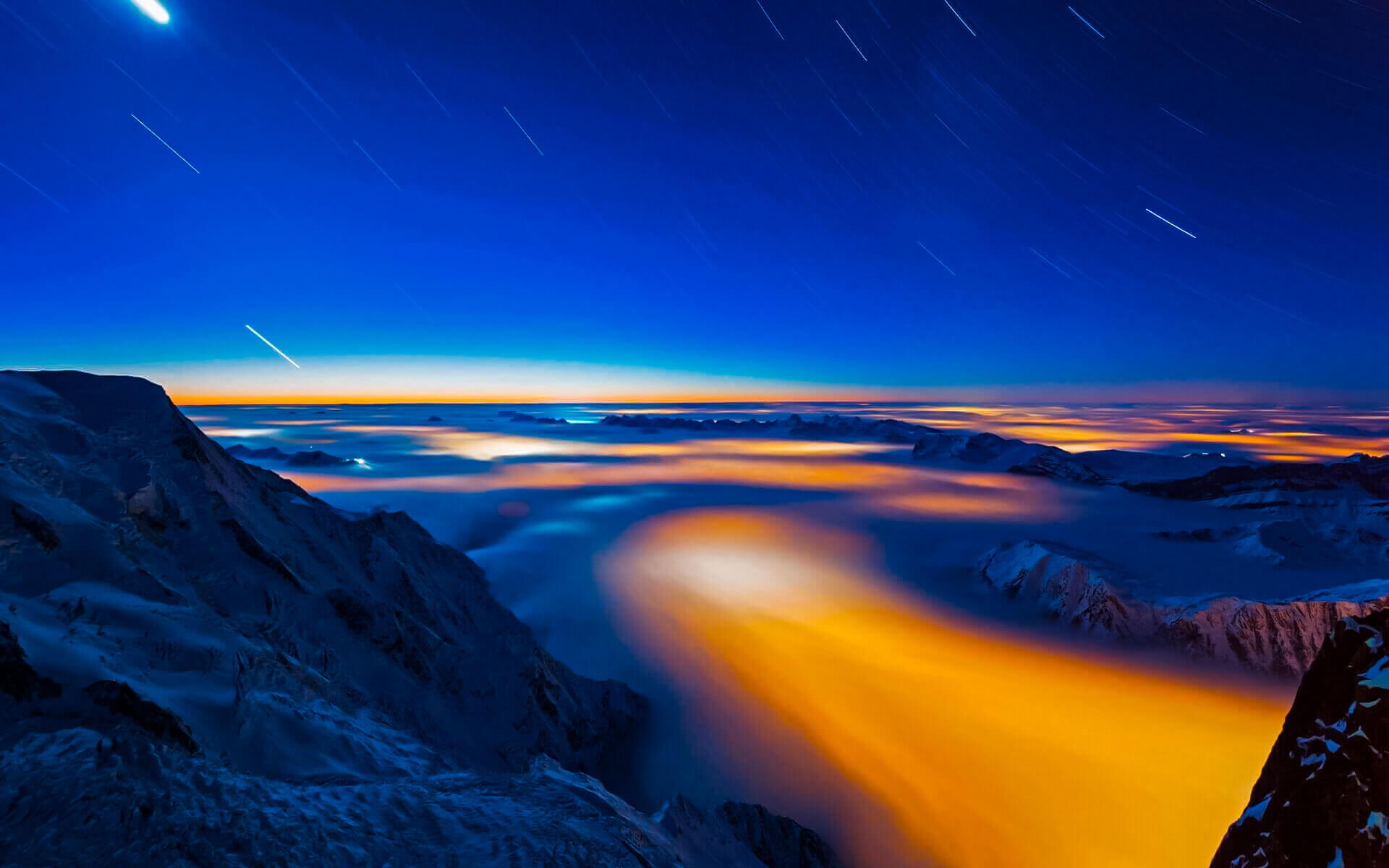Chamonix is a well-known resort in Haute-Savoie. Chamonix and Chamonix Valley are situated in the French Alps in south-eastern France. Chamonix, located at the foot of Mont Blanc and close to the borders of Italy and Switzerland, is considered the birthplace and one of the capitals of climbing. It hosted the inaugural Winter Olympics in 1924.
Chamonix in the winter is a snowy paradise! The Chamonix Valley is routinely ranked as one of the top 10 ski destinations in the world, catering to skiers of all abilities and tastes. Chamonix is a city of 10,000 people and the principal resort in a valley dominated by Mont Blanc, the highest peak in Western Europe (15,770 feet). Chamonix Valley has some of the greatest skiing and scenery in the Alps, as well as a long variety of winter sports activities. The 13-mile trek down the Valle Blanche glacier and the Sea of Ice, a drop of 9,200 feet; steepest lift-served vertical plunge in the world, is one of the world’s best runs. In the valley of Chamonix, there are six distinct ski areas. They offer about 90 kilometers of groomed slopes and trails, as well as 49 lifts. Les Grands Montets, which rises above the hamlet of Argentiere in Chamonix, is especially popular among powder skiers and snowboarders. The location is known for its difficult terrain, with 20 miles of groomed routes that are 50 percent severe, black, and just 10 percent simple. The vertical drop is little about 6,800 feet. Nobody is bored.
If you like skiing or snowboarding, Chamonix, France, should be on your bucket list. Chamonix, with its world-class off-piste skiing and riding, entices the hard-core and daring. Some of the lines are so difficult that you may need to wear a diaper.
If you’re not an excellent climber, Chamonix also offers a gentler side for those looking for a laid-back European ski vacation. The Chamonix ski regions offer over 170 kilometers of piste to cruise on, and there are several restaurants and pubs to enjoy the famed cuisine and wine.
With lifts operational until May, skiers may enjoy a lengthy season; there are glaciers and permanent snow fields, ski routes with a vertical height of more than 2,000m (6,562ft), and the Vallee Blanche, the world’s most renowned (and busy) off-piste track. All of this is just one hour from Geneva airport; Chamonix is a resort unlike any other.
Chamonix has a plethora of upscale boutiques and restaurants, including Albert Premier, which has two Michelin stars. For a more affordable supper, travel to La Maison Carrier (Albert Premier’s sister restaurant) in a charming rustic chalet for wonderful regional food and views of Mont Blanc.
MBC is a fantastic microbrewery and restaurant for a fun evening out, with live music on certain nights and a variety of ales and lagers produced immediately behind the bar.
Chamonix’s center is a pedestrian-only zone with a variety of intriguing stores and galleries to visit. On rainy days, stroll along the River Arve and stop for a hot chocolate at one of the cafés, or visit the Alpine Museum to learn more about the region. The sports center has a swimming pool, sauna, Jacuzzi, and steam room, as well as an Olympic-sized covered ice rink. Vallee Blanche, a well-known off-piste route, is located in Aiguille du Midi.
The Aiguille du Midi has no pistes, so it is exclusively for experts, but anybody can eat lunch at the Restaurant Le 3842 and take in the views of the Mont Blanc Massif, the Mer de Glace, and the Chamonix valley. After graduating from the nursery slopes at village level, beginners should proceed to Le Tour for mild slopes. Le Tour has a natural half-pipe, snowparks on Les Grands Montets and Les Houches, and an air bag in the Brevent-Flegere area. Les Houches is also a fantastic choice for intermediates, since it boasts extensive tree runs and vistas of Mont Blanc.
All of this is just one hour from Geneva airport; Chamonix is a resort unlike any other.


